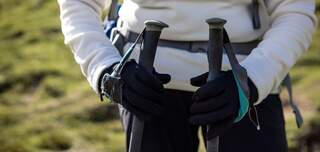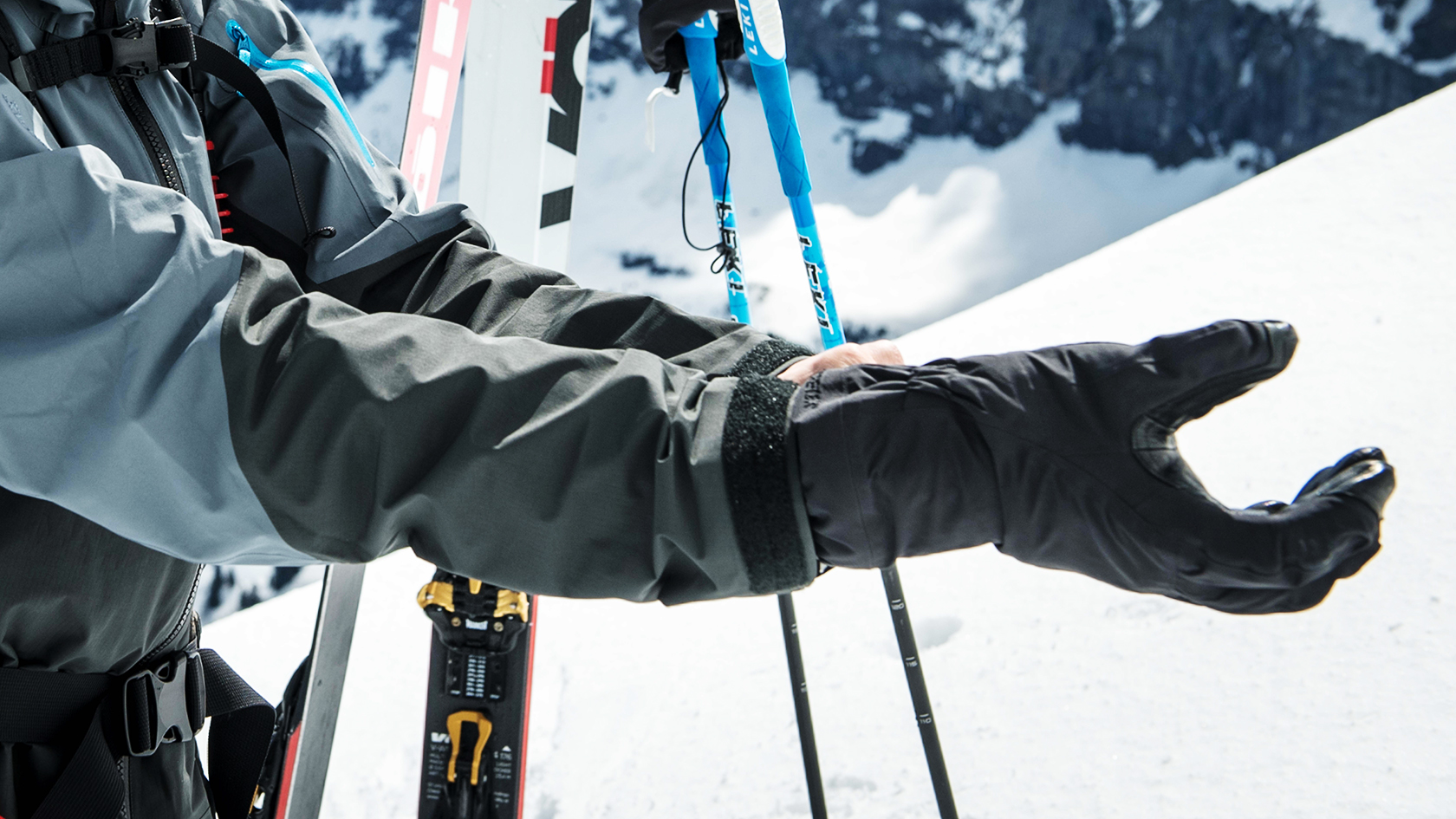If you’ve ever had freezing fingers on a winter walk, fumbled with your phone in the cold, or struggled to keep your hands dry on a rainy hike, you know just how important the right pair of gloves can be. But with so many options out there-waterproof, insulated, touchscreen-friendly, mittens, liners-it can be tough to know where to start.
This guide is here to help! We’ll walk you through everything you need to know to pick the perfect gloves for your next outdoor adventure.
Quick Questions: What Do You Need Your Gloves For?
Before you start shopping, ask yourself:
- What will you be doing? (Walking, hiking, climbing, skiing, everyday use?)
- How cold or wet will it be?
- Do you need to use your phone or other gadgets?
- What’s more important: warmth or dexterity?
- Do you have any special requirements? (E.g. long fingers, allergies to certain materials)
Knowing the answers will help you narrow down your choices and avoid buying gloves that aren’t quite right.

Glove Types Explained: Which Is Right for You?
1. Walking & Trekking Gloves
- Best for → Everyday walks, spring/autumn hikes, dog walking, commuting
- What to look for → Lightweight, breathable, some insulation, water-resistant
- Materials → Fleece, softshell, synthetic blends
If you’re after a glove that’ll keep the chill off on a morning walk or a light hike, these are your go-to. They’re comfy, easy to pack, and give you enough movement for zips and laces.
2. Winter & Mountaineering Gloves
- Best for → Cold weather hikes, winter mountaineering, snowshoeing
- What to look for → Serious insulation, waterproofing, tough palms, long cuffs
- Materials → Synthetic insulation, Gore-Tex®, leather
These are built for the coldest, wettest days. They’re bulkier, but they’ll keep your hands toasty even in snow and sleet.

3. Climbing & Technical Gloves
- Best for → Winter climbing, scrambling, technical mountain days
- What to look for → Great grip, flexibility, tough materials, some insulation
- Materials → Leather, softshell, stretch panels
You’ll want something that lets you handle ropes and carabiners without freezing your fingers off.
4. Ski & Snowboard Gloves
- Best for → Skiing, snowboarding, winter sports
- What to look for → High warmth, waterproof, wrist leashes, soft nose wipes
- Materials → Synthetic insulation, waterproof membranes, leather/synthetic palms
These are all about warmth and weather protection, with a few handy extras for the slopes.
5. Mittens & Lobster Mitts
- Mittens → Super warm, fingers share heat, less dexterity
- Lobster mitts → A mix of glove and mitten-more warmth than gloves, more movement than mittens
If you really feel the cold (or have poor circulation), mittens or lobster mitts might be perfect for you.

What Features Should You Look For?
Fit & Sizing
Getting the right fit is more important than you might think. If your gloves are too tight, your hands can actually end up colder because blood can’t circulate properly. Too loose, and you’ll have chilly gaps and clumsy fingers. When you try on gloves, check that your fingers reach the tips comfortably, but you can still wiggle them and make a fist without any pinching. Don’t forget to check the brand’s size guide, as sizing can vary. If you’re stuck between two sizes, it’s usually a good idea to size up-especially if you plan to wear a thin liner glove underneath for extra warmth.
Insulation
Insulation is what keeps your hands warm, and the best type for you depends on where and when you’ll be wearing your gloves. Synthetic insulation, like Thinsulate or PrimaLoft, is a popular choice because it keeps you warm even if it gets a bit damp and dries out quickly. Down is super cosy and lightweight, perfect for really cold, dry days, but it doesn’t love getting wet. Fleece linings are soft and snug, and are great in lighter gloves or as a first layer. If you’re going to be moving a lot, you might not need super-thick insulation-your body heat will do some of the work for you!
Waterproofing
Nobody likes soggy hands, so if you’ll be out in rain, snow, or slush, waterproof gloves are a must. Many outdoor gloves have clever waterproof membranes like Gore-Tex® that keep water out but still let your hands breathe. For dry, chilly days, water-resistant gloves might be enough, but if you’re expecting a downpour or wet snow, go for fully waterproof. Also, pay attention to the seams and closures-water can sneak in through the smallest gaps, so well-sealed seams and snug cuffs are a big plus.
Breathability
Ever had sweaty hands that end up feeling just as cold as if they were wet? That’s where breathability comes in. Breathable gloves let moisture from your skin escape, so your hands stay dry and comfortable, even when you’re working hard. If you’re someone who tends to get hot hands or you’re planning something active, look for gloves made with breathable fabrics or membranes, or consider adding a thin liner that wicks moisture away from your skin.
Dexterity
Dexterity is all about how easily you can use your hands while wearing your gloves. If you need to tie your boots, use your phone, or handle gear, you’ll want gloves that let your fingers move freely. Thinner gloves or those with stretchy panels are great for fiddly tasks, while big, chunky winter gloves can feel a bit clumsy. If you’re doing something technical like climbing, it’s worth trying on a few pairs to find that sweet spot between warmth and finger movement.
Touchscreen Compatibility
Let’s face it, no one wants to take their gloves off just to send a text or check the map. Thankfully, lots of gloves now come with touchscreen-friendly fingertips, usually on the thumb and index finger. This means you can use your phone, GPS, or even snap a quick photo without exposing your hands to the cold. If this is something you’ll use a lot, give the gloves a quick test in-store or at home to make sure the touchscreen feature actually works for you.
Cuffs & Closures
The way your gloves close around your wrist can make a big difference, especially in bad weather. Short cuffs are neat and fit easily under your jacket sleeves, which is great for everyday use or milder weather. Longer, gauntlet-style cuffs are brilliant for snow or heavy rain because they go over your jacket sleeves and help seal out the cold. Look out for adjustable closures like Velcro straps, elastic, or drawcords-these let you tighten things up and keep the warmth in, and the wind and wet out.
Layering: The Secret to Warm Hands
Just like with jackets, layering works for gloves too:
- Liner gloves → Thin, wicking, can be worn alone or under bigger gloves
- Insulated gloves → Your main warmth layer
- Shell gloves → Waterproof/windproof outer layer for really bad weather
Layering lets you adapt as conditions change-peel off a layer when you warm up, add one when the temperature drops.
Glove Materials: Pros and Cons
| Material | Pros | Cons |
|---|---|---|
| Leather | Durable, great grip, wind-resistant | Needs care, heavy when wet |
| Synthetic | Lightweight, dries fast, affordable | Less durable than leather |
| Fleece | Warm, soft, breathable | Not wind or waterproof |
| Softshell | Flexible, water-resistant | Not fully waterproof |
| Gore-Tex® | Waterproof, breathable | Pricier |
FAQs
Look for insulated, waterproof gloves with a snug fit. Layer with a liner for extra warmth.
Yes! By keeping your fingers together, mittens trap more heat.
Layer up: start with a liner, add an insulated glove, and top with a waterproof shell if needed. Avoid tight gloves-they cut off circulation.
Many gloves now have touchscreen-friendly fingertips. Check before you buy!
Snug but not tight, with your fingers reaching the ends. If you’re unsure, size up.
Look for gloves with a Gore-Tex® or similar waterproof membrane for the best protection.
Check the care label. Leather gloves need special treatment; synthetic gloves can often be hand-washed and air-dried.
Related articles

Let us know you agree to cookies
We use marketing, analytical and functional cookies as well as similar technologies to give you the best experience. Third parties, including social media platforms, often place tracking cookies on our site to show you personalised adverts outside of our website.
We store your cookie preferences for two years and you can edit your preferences via ‘manage cookies’ or through the cookie policy at the bottom of every page. For more information, please see our cookie policy.





